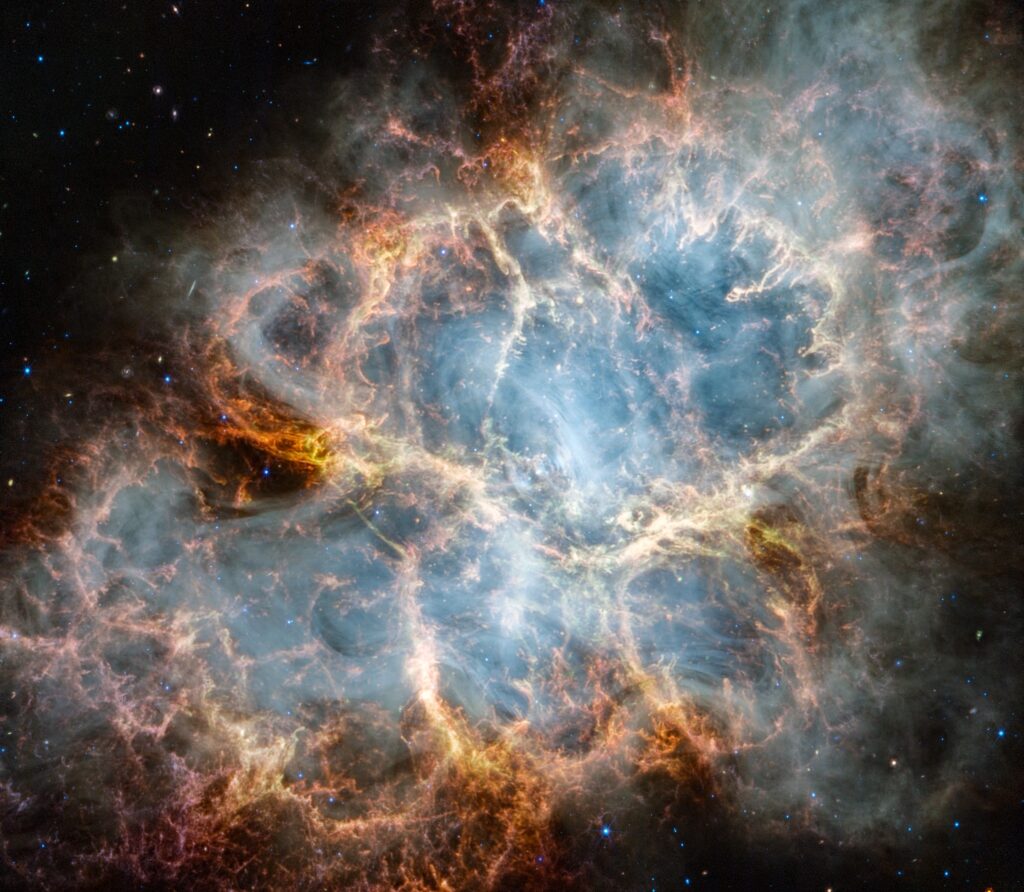
“6,500 light-years away lies the Crab Nebula, the remains of an exploded star. While this target has been well-studied by multiple observatories, including the Hubble Space Telescope, Webb’s infrared sensitivity and resolution offer new clues into the makeup and origins of this scene.” Credit: NASA/ESA.
By Mariana Meneses
The James Webb Space Telescope (JWST) is a premier observatory with a large infrared telescope that has an approximately 6.5-meter diameter primary mirror.
It is designed to conduct infrared astronomy and observe some of the faintest, oldest objects in the universe, from a vantage point nearly one million miles from Earth.
As we’ve discussed in another TQR article, the infrared part of the light spectrum is ideal for observing celestial objects obscured by dust, which is crucial because stars and planets form in dusty regions. Additionally, infrared light helps overcome the challenge of the universe’s expansion, which causes distant objects to move away from us faster. Due to a phenomenon called redshift, this expansion means that we are constantly receiving infrared light from remote parts of the universe.
The JWST is now allowing us to capture and study this previously inaccessible information.
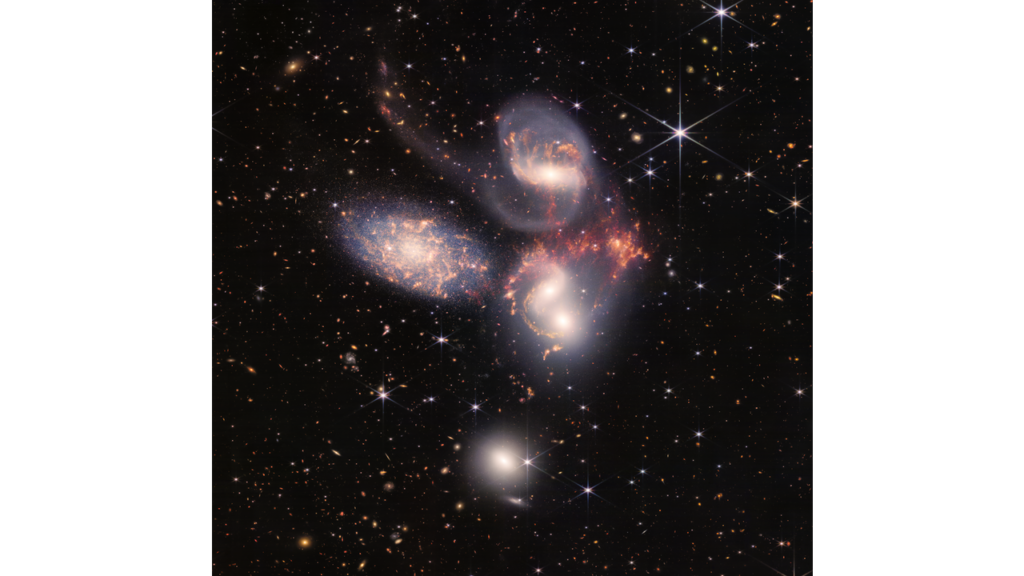
“An enormous mosaic of Stephan’s Quintet. (…) Webb shows never-before-seen details in this galaxy group. Sparkling clusters of millions of young stars and starburst regions of fresh star birth grace the image. Sweeping tails of gas, dust and stars are being pulled from several of the galaxies due to gravitational interactions. Most dramatically, Webb captures huge shock waves as one of the galaxies smashes through the cluster.” Credit: NASA/ESA.
This means that the JWST can view objects too old, distant, or faint for the Hubble Space Telescope that was launched in 1990.
The JWST is equipped with high-resolution and high-sensitivity instruments, allowing it to detect celestial objects that are very cold and old. Thus, the JWST’s findings could fundamentally shift how we understand our universe, and drive humanity’s endeavours to understand the deepest reaches of the cosmos.
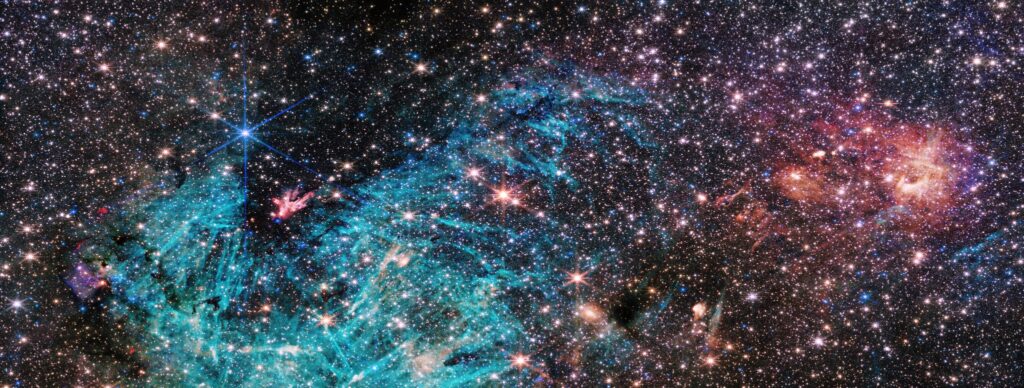
“NASA’s Webb Reveals New Features in Heart of Milky Way”. Credit: NASA/ESA.
One of the important discussions raised by JWST data is the accuracy of our current account of the Big Bang and the origin of the universe.
The Big Bang Theory is the leading explanation for how the universe began. According to the theory, the entire universe began as a tiny singularity that went through an explosive expansion.
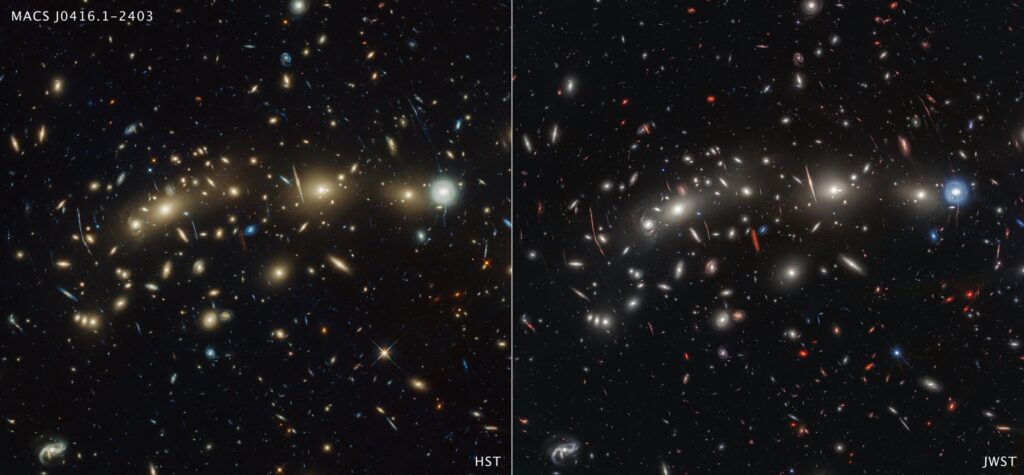
“NASA’s Webb [on the right] and Hubble [on the left] combine to create most colorful view of Universe”. Credit: NASA/ESA.
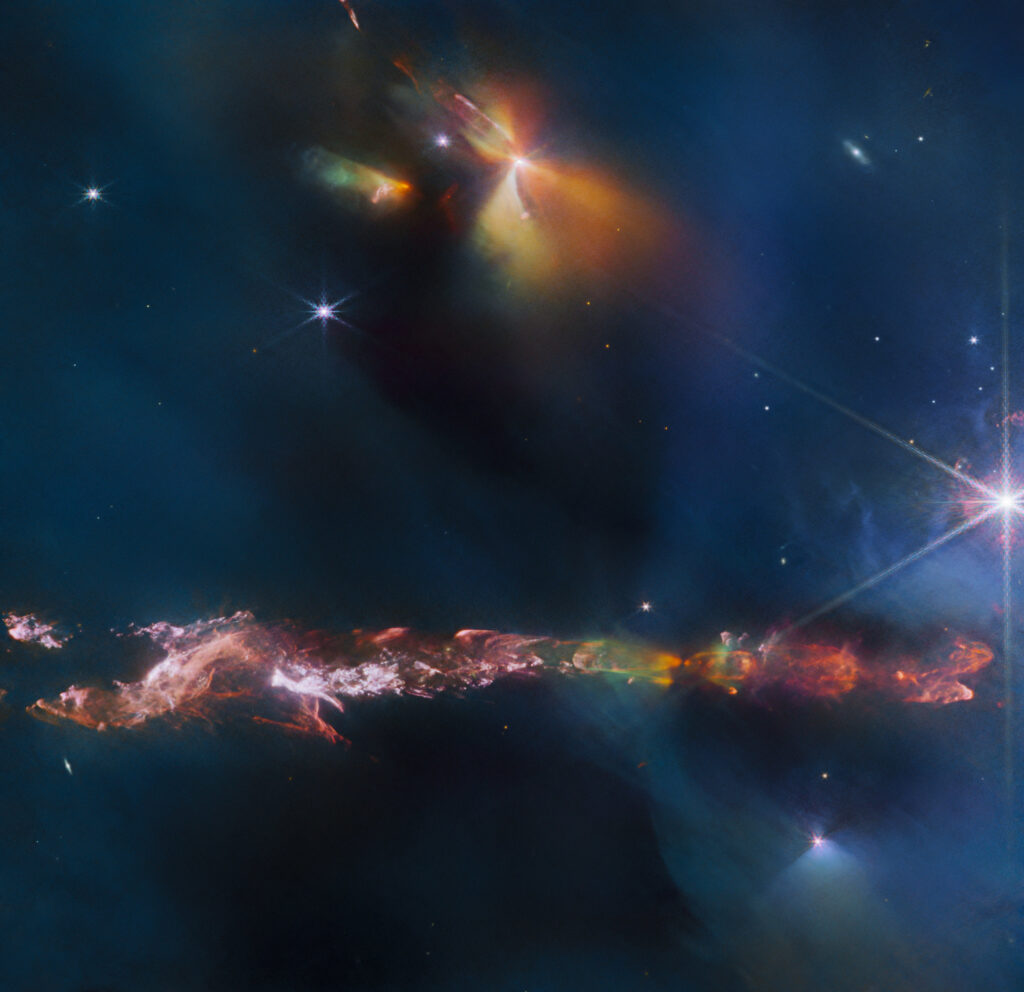
Webb’s high-resolution view of Herbig-Haro 797 reveals two baby stars in parallel gas jets, challenging previous assumptions of a single star, with the top half potentially containing two more baby stars. Credit: NASA/ESA.
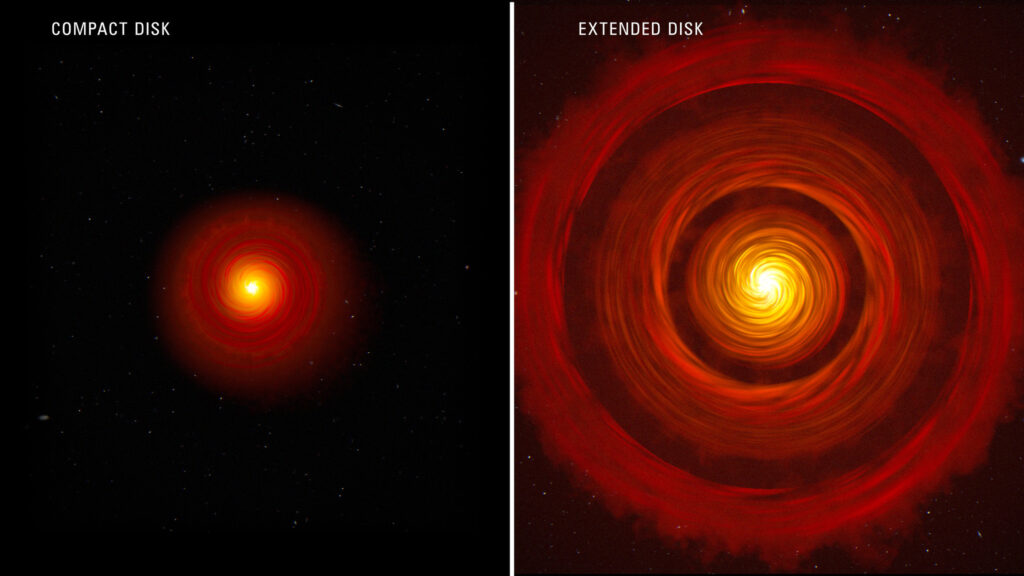
Webb’s breakthrough findings confirm the long-proposed process of planet formation, showing how icy pebbles efficiently drift from compact disks to inner regions, delivering water and solids to form planets around newborn Sun-like stars. Credit: NASA/ESA.
There have been many recent developments and discoveries in the field of cosmology that have improved our understanding of the Big Bang Theory.
For example, new research has improved the accuracy of the parameters governing the expansion of the universe. Although the concept of the universe’s expansion is widely accepted, since there are no fixed reference points in space, accurately gauging its rate of expansion proves challenging and leads astronomers to seek dependable cosmic benchmarks.
The researchers, led by Maria Giovanna Dainotti, Assistant Professor at the National Astronomical Observatory of Japan (NAOJ), managed to do so using a variety of new statistical methods. More accurate parameters will help astronomers determine how the Universe grew to its current state, and how it will evolve in the future.
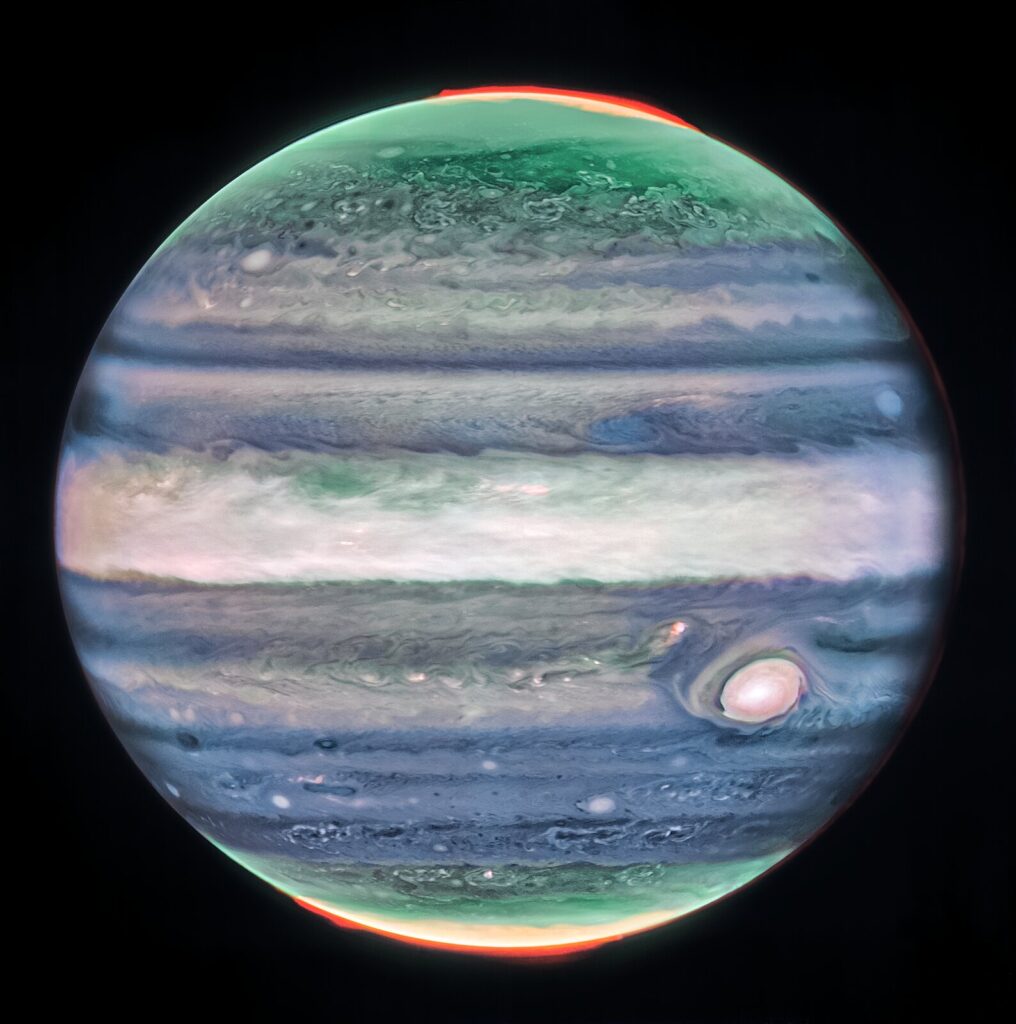
Webb’s infrared eye captures new details in the higher-altitude layers of Jupiter’s atmosphere, providing insights into the planet’s complex stratospheric patterns. Credit: NASA/ESA.
While statistical calculations have been instrumental in advancing our understanding of the Big Bang, there’s a profound difference between predicting the universe’s behaviour mathematically and actually capturing the information traveling through the cosmos.
This is where the James Webb Space Telescope (JWST) comes into play.
![M74 [Phantom Galaxy] shines at its brightest in this combined optical/mid-infrared image.](https://thequantumrecord.com/wp-content/uploads/2023/12/Phantom_Galaxy_across_the_spectrum_pillars.jpg)
“M74 [Phantom Galaxy] shines at its brightest in this combined optical/mid-infrared image, featuring data from both the NASA/ESA Hubble Space Telescope and the NASA/ESA/CSA James Webb Space Telescope.” Credit: The European Space Agency.
The media went into a frenzy with the revelation that the JWST had challenged aspects of the Big Bang theory, raising questions about facts that were thought to have been established.
The discovery of early massive galaxies in the incredibly young universe seemed to challenge our current model. The potential problem with distant galaxies isn’t that they exist, but rather that their estimated masses were greater than time would permit them to accumulate.

Barred spiral galaxy M83. Credit: NASA/ESA.
Several galaxies were quite large, well over 10^10 solar masses, which is still much smaller than the Milky Way but quite gigantic for the early universe.
The researchers who discovered these galaxies estimated that their large masses put them in tension with many models of galactic formation and evolution. However, further analysis shows they fit with modern cosmology, though their estimated masses pose questions about galactic formation.
In the video above, Dr. Neil DeGrasse Tyson explains that,
“The tenets of the Big Bang – that the Universe started out small hot dense, where matter and energy were a primordial soup, where the forces of nature had merged – all of that is thoroughly supported by observations of this universe. If tomorrow you have a new idea about how the universe works, it’s going to enclose everything we’ve been talking about up to that moment that has been experimentally and observationally verified. You can enclose it in something deeper.”
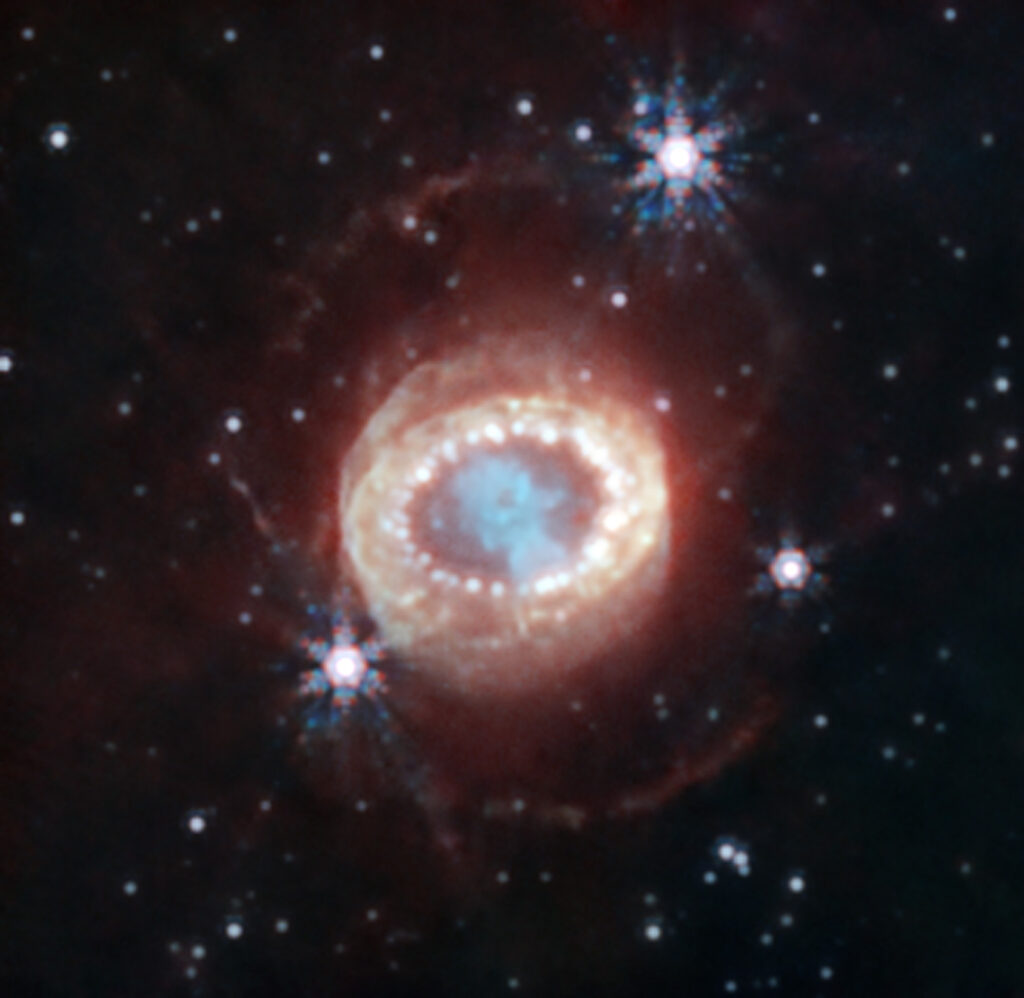
The Iconic Supernova SN 1987A. Credit: NASA/ESA.
A supernova is the explosion of a star and is the largest explosion that takes place in the universe. A supernova is an explosion that happens when a massive star reaches the end of its life or when a white dwarf star experiences uncontrolled nuclear fusion.
In a NASA Q&A, Nobel Laureate Dr. John Mather, who is the Senior Project Scientist for the James Webb Space Telescope, explained the Big Bang, JWST’s role in understanding the early universe, and what JWST will observe. He explained that the Big Bang is a misleading name for the expanding universe that we see. The universe doesn’t have a center, and the Big Bang happened everywhere at once.
We know this because we see galaxies rushing away from each other and we see the heat that was left over from early times, which uniformly fills the universe. Dr. Mather also talked about what JWST can see, which is not the beginnings of the universe, but rather a period of the universe’s history that we have not seen yet before, specifically the first objects that formed as the universe cooled down after the Big Bang.
For instance, the JWST captured a stunning image of the Phantom Galaxy, known as M74, located 32 million light-years away in the constellation Pisces, revealing its seashell-like spiral structure as part of the PHANGS survey to study star formation and dust in 19 galaxies. The project aims to find star-forming regions in those galaxies, measure the masses and ages of star clusters, and learn more about the small grains of dust drifting in interstellar space.

Pandora Cluster – Webb’s infrared image reveals the galaxy cluster Abell 2744, with a distant galaxy (UHZ1) hosting the most distant X-ray-detected black hole ever found, shedding light on the early stages of black hole development just 470 million years after the Big Bang. Credit: NASA/ESA.
The spiral galaxy M51, also known as NGC 5194, is a grand-design spiral galaxy with prominent, well-developed spiral arms that lies about 27 million light-years away from Earth in the constellation Canes Venatici.
The importance of this finding is that it sheds light on the interplay between stellar feedback and star formation in environments outside of our own galaxy, the Milky Way.
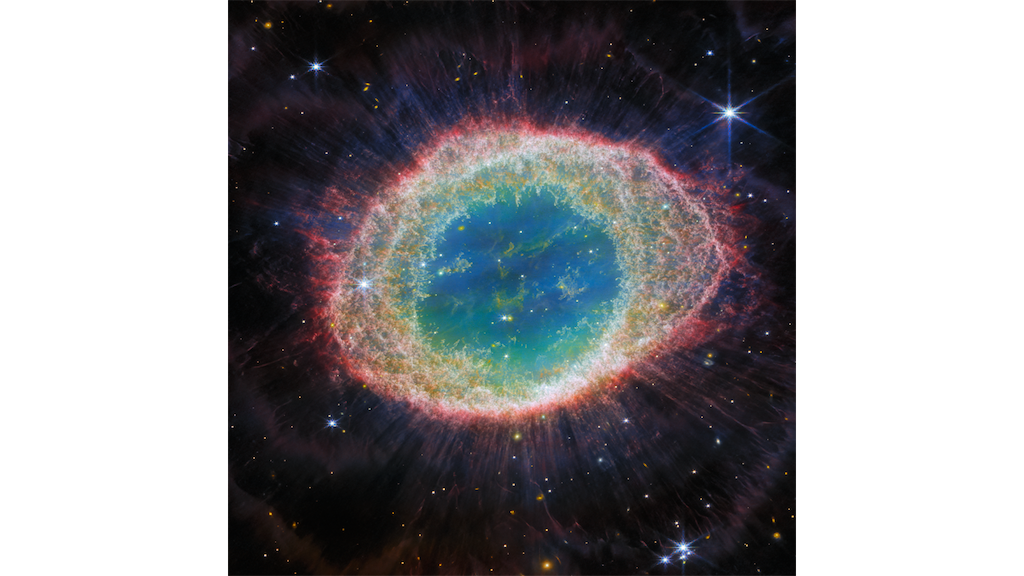
“NASA’s James Webb Space Telescope has observed the well-known Ring Nebula in unprecedented detail. Formed by a star throwing off its outer layers as it runs out of fuel, the Ring Nebula is an archetypal planetary nebula. Also known as M57 and NGC 6720, it is relatively close to Earth at roughly 2,500 light-years away.” Credit: NASA/ESA.
A nebula is a giant cloud of dust and gas in space. Some nebulae come from the gas and dust thrown out by the explosion of a dying star, such as a supernova. Other nebulae are regions where new stars are beginning to form.
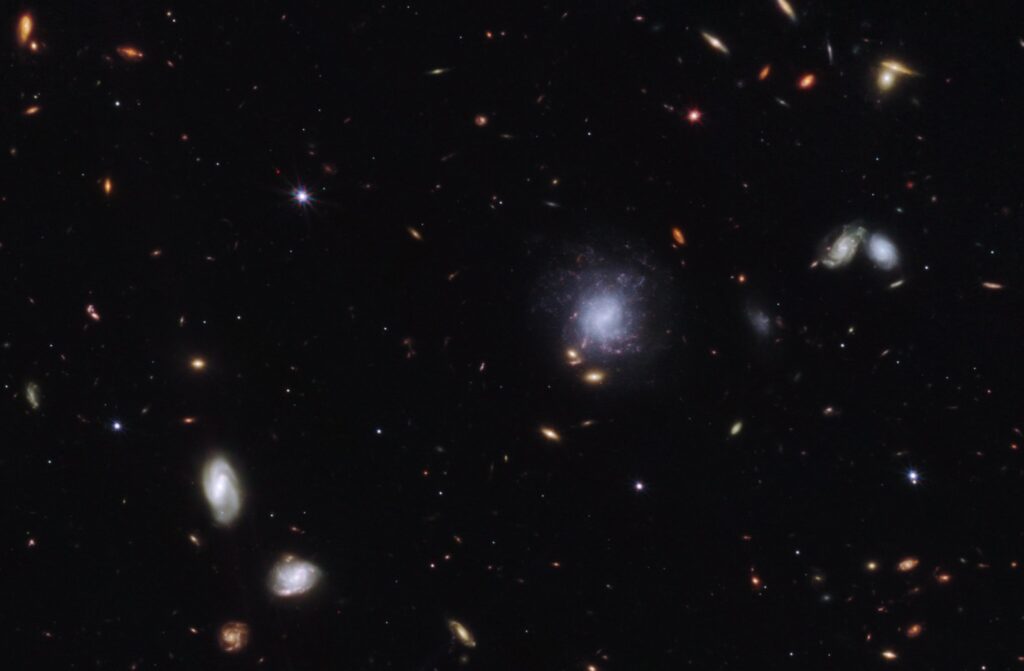
Webb’s first detection of tellurium, a rarer element than platinum on Earth, in the aftermath of a neutron star merger, provides insights into the explosive events that occurred 120,000 light-years away in a distant spiral galaxy. Credit: NASA/ESA.
The JWST has started studying one of the most famous supernovae, SN 1987A.
This supernova is located 168,000 light-years away in the Large Magellanic Cloud and has been observed intensely for nearly 40 years since its discovery in 1987. New observations by the telescope’s Near-Infrared Camera have provided important information about how a supernova evolves over time and shapes its remnant.
The JWST is a remarkable leap forward in our exploration of the cosmos. It’s enabling us to peer into the universe’s deepest reaches, challenging our understandings and shedding light on the complex processes of star formation, galactic evolution, and the life cycles of celestial objects like supernovae. The JWST fuels our curiosity about the mysteries of the universe and is leading us into an exciting journey of cosmic discovery, shaping our understanding of the universe and our place within it.
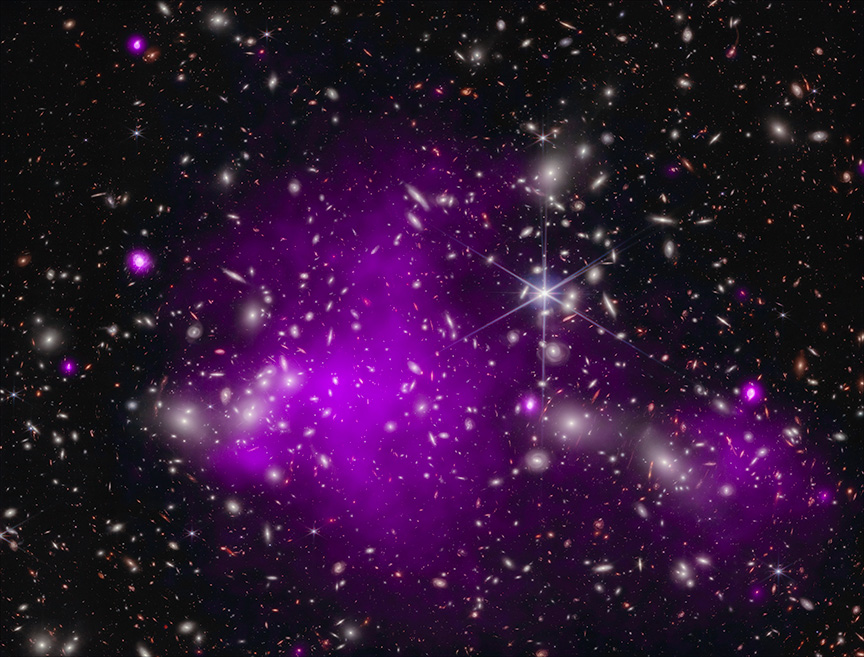
NASA’s Chandra X-ray Observatory and James Webb Space Telescope discover the most distant black hole ever detected in X-rays, shedding light on the early universe, located in the galaxy UHZ1 within the Abell 2744 galaxy cluster, 13.2 billion light-years away when the universe was only 3% of its current age. Credit: NASA/ESA
Craving more information? Take a look at these recommended TQR articles:
- Dark Energy Explorers: A Citizen Science Project Looks Over 9 Billion Years Into the Past
- James Webb Space Telescope Advances Search for Signatures of Life
- James Webb Space Telescope: Hubble’s Successor May Rewrite the Physics Books
- The Cool Neighbors of Our Sun: Citizen Scientists Search for Brown Dwarfs



